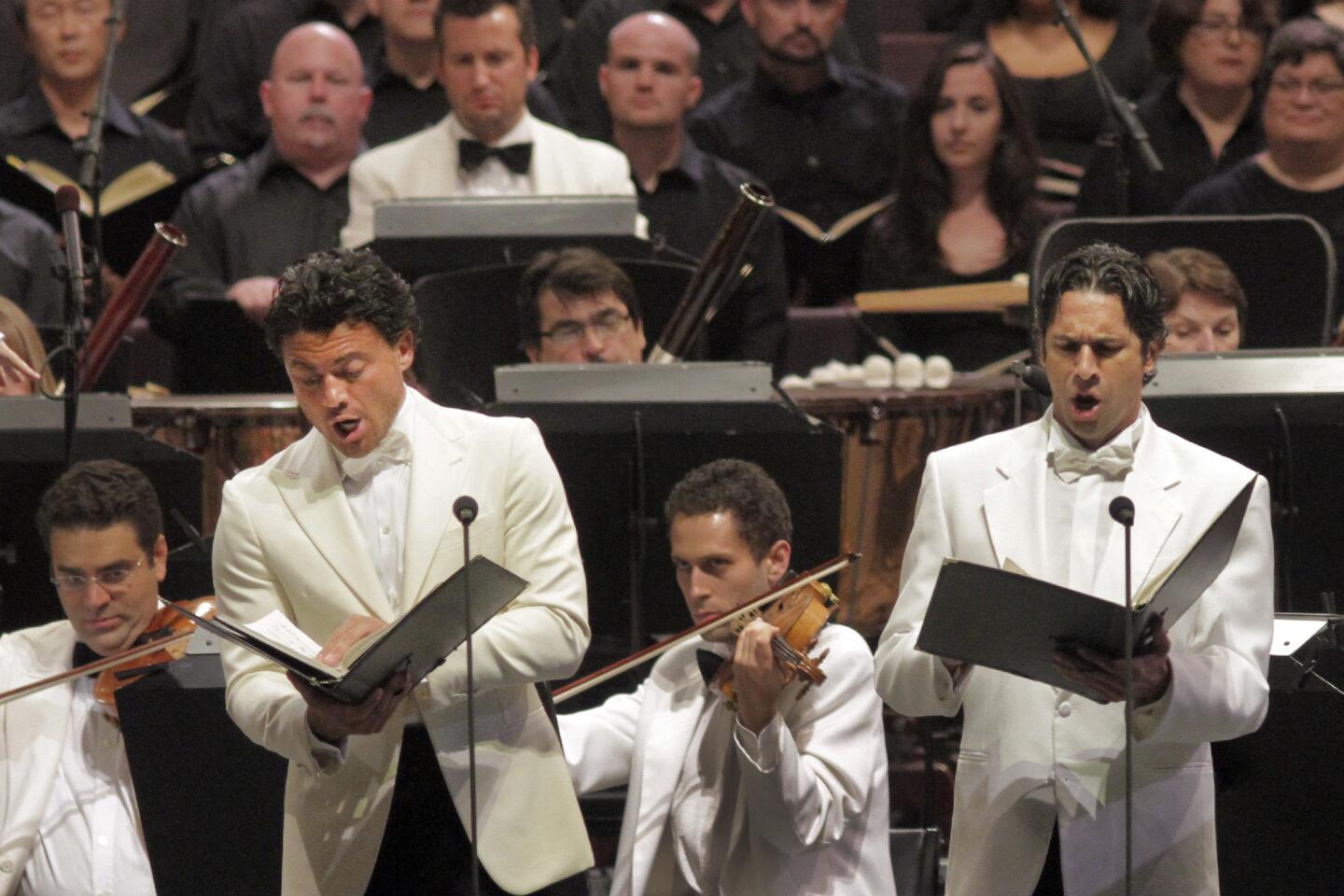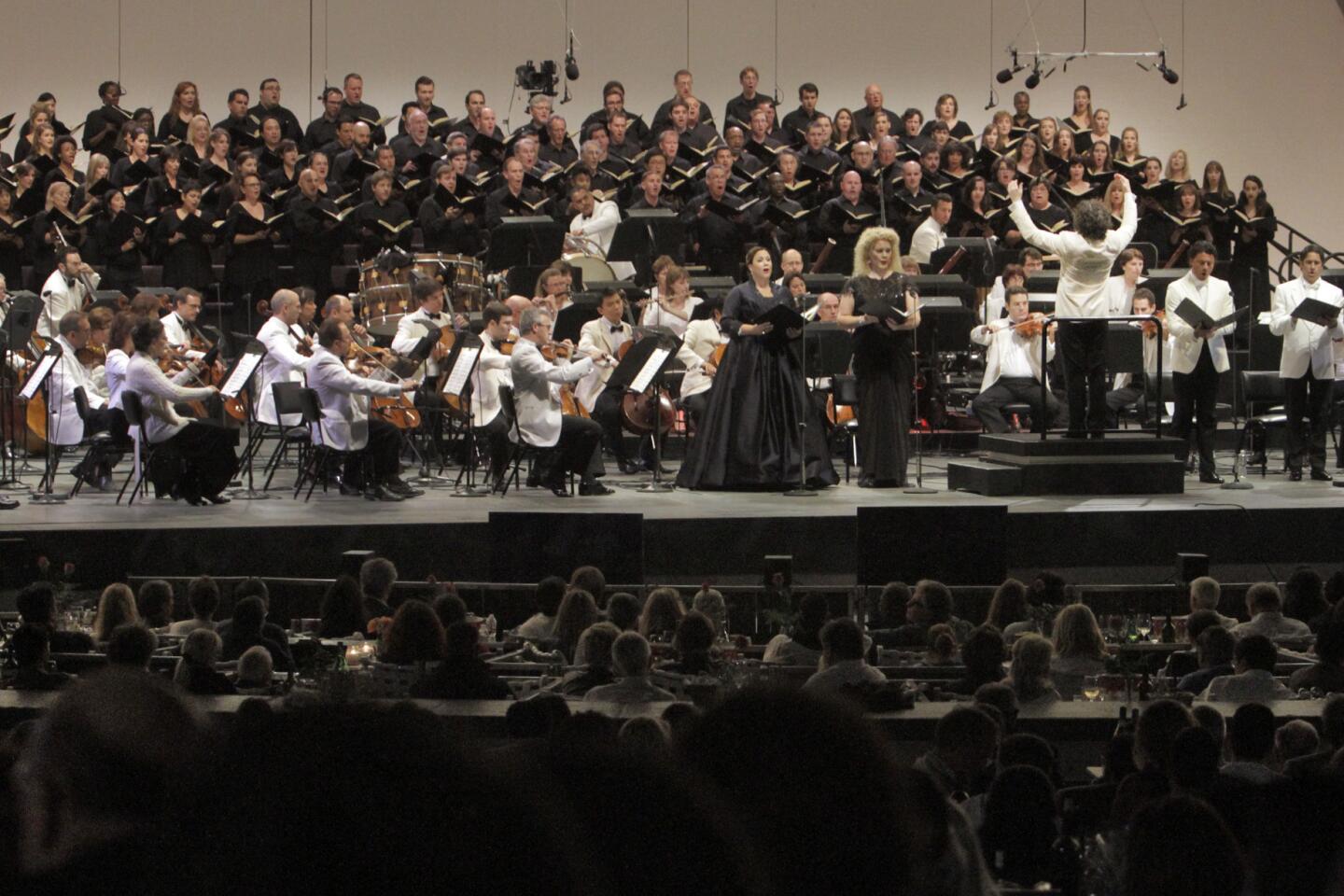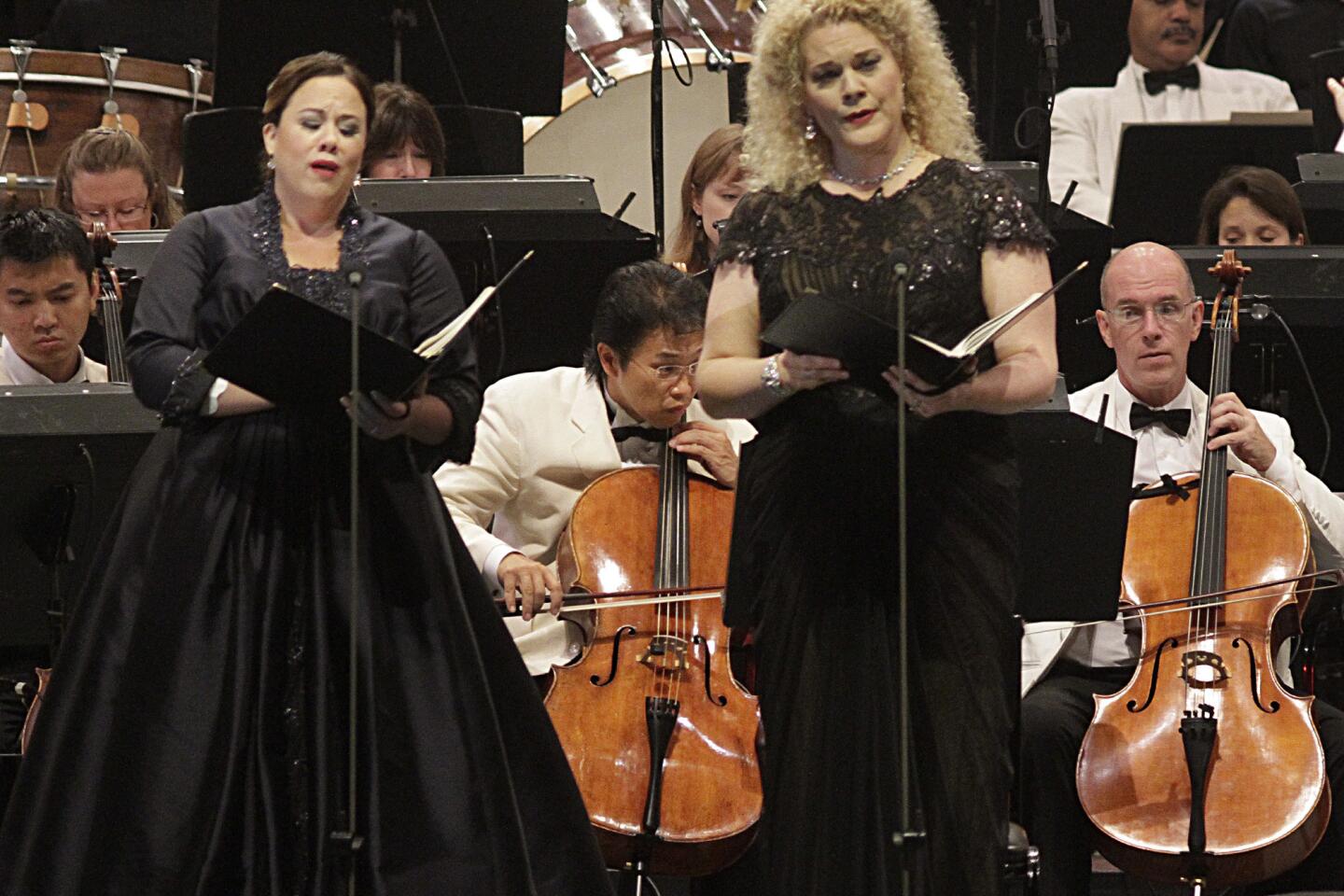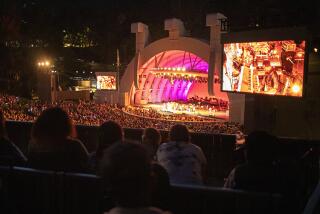Hollywood Bowl to up the intensity with Verdi’s ‘Requiem’
Usually when you go to the Hollywood Bowl all you need to bring are comestibles (cheesy or otherwise), an assortment of beverages (white or red) and a blanket. When the Los Angeles Philharmonic plays Verdi’s “Requiem” on Tuesday and Thursday, discerning concertgoers will also tuck a box of giant-sized tissue and some smelling salts into the picnic basket.
Why the precautions? When the Mass premiered in Milan, Italy, in 1872, one choir member had a seizure and an apprentice priest on duty reportedly cried for more than an hour.
FOR THE RECORD:
Verdi’s “Requiem”: An Aug. 14 For the Record item correcting an Aug. 11 Arts & Books section article about Verdi’s “Requiem” did not properly explain the Italian names and notations for dynamic markings. Verdi’s original marking is quadruple forte and is notated as ffff. Quadruple fortissimo, which was incorrectly mentioned in the article, would be notated as ffffffff.
FOR THE RECORD:
Verdi’s “Requiem”: An Aug. 11 article about Verdi’s “Requiem” said that the piece premiered in 1872. The correct date is 1874. It also stated that the piece contained a dynamic marking of quadruple fortissimo. Verdi’s original marking was, in fact, a quadruple forte. —
With Gustavo Dudamel in charge this week, it is likely everyone at the Hollywood Bowl will get through the 90 minutes without needing a medic. As for the tissue, it’s a matter of when, not if, the tears will find you.
Santa Monica native Julianna Di Giacomo is the soprano soloist for the “Requiem” and has already sung the piece several times this year in Europe.
VIDEO: Five requiems to nearly rival Verdi’s
“This requiem is so intense because it’s half the length of a proper opera but still has all the drama,” she says.
The requiem as written to commemorate the first anniversary of the death of Italian novelist Alessandro Manzoni. It was not a commission —- at this point in his career the composer didn’t need the money — but a gesture of respect and Italian patriotism.
His “Requiem” was initially well received although there was some discontent on the part of devout Catholics about a sacred piece sounding so operatic.
The Los Angeles Master Chorale will be the choir for Bowl performances, and its music director, Grant Gershon, has studied the piece at length.
“Verdi was not religious in any way, but he knew the power, the drama and the intense devotion that people (especially his fellow Italians) felt for the liturgy of the Requiem,” Gershon explains in an email.
PHOTOS: Gustavo Dudamel career in pictures
“A lot of the most interesting 19th Century composers wrote mind-numbingly dull liturgical music (Franz Liszt is Exhibit A for this). It’s as if they were going to be graded by their Sunday catechism teachers. Verdi didn’t give a rip what the Church thought, he was going to write a Requiem with the same sense of drama, humanity and passion that he brought to his greatest operas. The result is the most vivid and personal choral work of the Romantic period.”
The requiem Mass has been chanted during Catholic funeral services since the middle of the 12th century. In the intervening 900 years, the introduction of instruments plus patrons willing to give commissions and the natural drama of the text have been catnip for composers. An afternoon on Spotify is long enough to discover that everyone’s who’s anyone has set at least some requiem text.
In opera the drama usually comes down to love gone wrong, but in requiems it’s the tension between asking God for mercy on behalf of the recently departed soul and a not-so-subtle reminder to those who remain what the Day of Judgment is cooking up, should they fancy their chances.
There are four soloists, soprano, mezzo-soprano, tenor and bass, along with full orchestra and chorus, the full might of which is employed to spectacular effect in the “Dies Irae” (Day of Wrath) section. With a score marking of quadruple fortissimo — ffff — that is, roughly, “as loud as you can plus one” it is some of the most ferocious music in the whole of the classical music canon.
FULL COVERAGE: 2013 Spring arts preview
Dvorak, Mozart and Fauré have their moments of anguish, but they tend to be more sorrowful than vengeful. Their best bits, respectively, are the more contemplative “Lacrimosa,” “Pie Jesu” and “Libera Me.” In the 20th century, when Catholic funeral rites were no longer a shared cultural artifact, such composers as Britten, Penderecki and Ligeti used instead the gesture of the requiem and its function as a public expression of grief to talk about the futility of war and politics rather than one individual death.
The problem with such emotionally charged material — there aren’t many people who haven’t experienced the agony of losing someone they loved — is how to shape it. Verdi, a man who spent his life honing his dramatic skills with “Aida” (Sunday night’s program at the Bowl), “Otello” and “Rigoletto,” among others, was a master of dramatic control.
Verdi’s only real challenger in the decibel stakes is the 1837 setting by Hector Berlioz. The French composer, a lifetime member of the “if four horns is good, eight is better” school, called for eight bassoons, 16 timpani (10 players), 10 pairs of cymbals, four offstage brass choirs and a choir of 210 singers that he recommended be double or tripled. He loved it more than any of his other works, “Symphonie Fantastique” included, but unfortunately it is rarely performed, mostly because no one can afford to stage it. Verdi, a successful opera composer, understood these practicalities in a way the likely bipolar, definitely opium-addicted Berlioz never did.
TIMELINE: Summer’s must see concerts
All this talk of efficiency and practicality isn’t to say that Verdi wrote what was necessary and nothing more. There’s a mesmerizing double fugue in the “Sanctus” and some of his best writing for soprano and mezzo-soprano.
“There isn’t even one wasted moment,” says Di Giacomo. “It’s just so cleverly and brilliantly written. In a full opera you have a lot of recitative to connect things together, but in this piece it just flows. In the opening ‘Kyrie,’ the chorus really draws everyone in and quiets everyone down. Each soloist comes in one by one by one and sets the tone for the whole night.”
Gracious enough to mention that she thinks the mezzo gets the best music, Di Giacomo is clearly happy with her allotment. “I always feel like I’m the icing on the cake because I get to float above everybody through the whole thing — especially in the ‘Lacrimosa.’ It’s one of those moments that I really get overwhelmed. I don’t think I could ever get tired of singing this.”
More to Read
The biggest entertainment stories
Get our big stories about Hollywood, film, television, music, arts, culture and more right in your inbox as soon as they publish.
You may occasionally receive promotional content from the Los Angeles Times.











